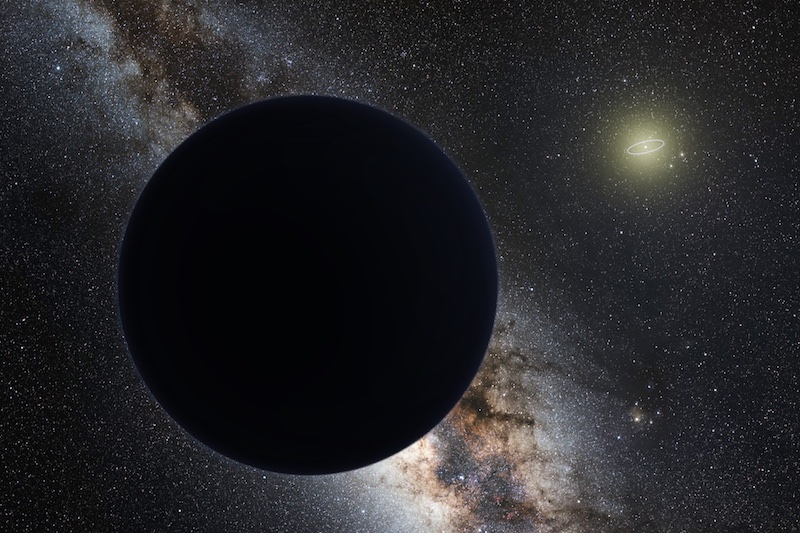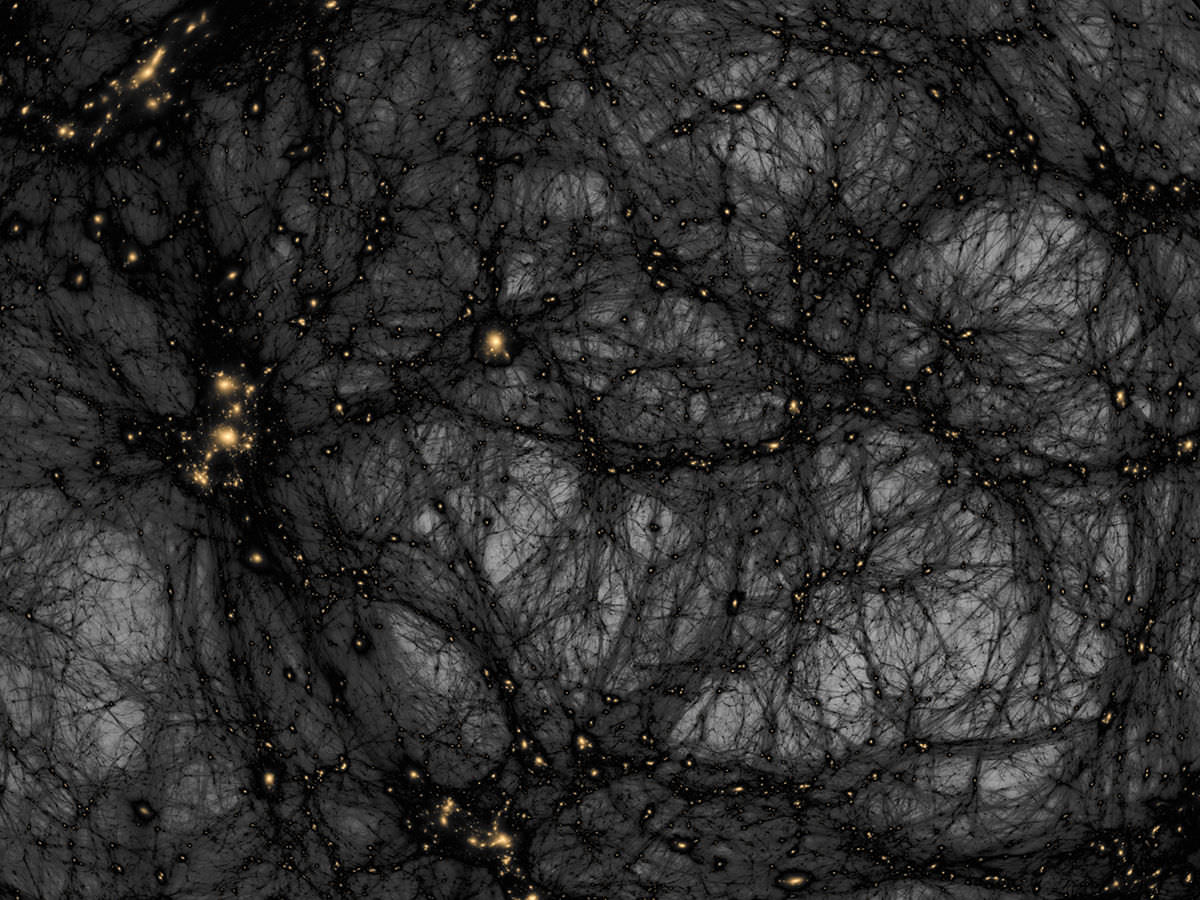In his classic book On the Structure of Scientific Revolutions, the philosopher Thomas Kuhn posited that, for a new scientific framework to take root, there has to be evidence that doesn’t sit well within the existing framework. For over a century now, Einstein’s theory of relativity and gravity has been the existing framework. However, cracks are starting to show, and a new paper from researchers at Case Western Reserve University added another one recently when they failed to find decreasing rotational energy in galaxies even millions of light years away from the galaxy’s center.
Continue reading “Rotation Curves of Galaxies Stay Flat Indefinitely”The Debate Continues. Do Wide Binaries Prove or Disprove MOND?
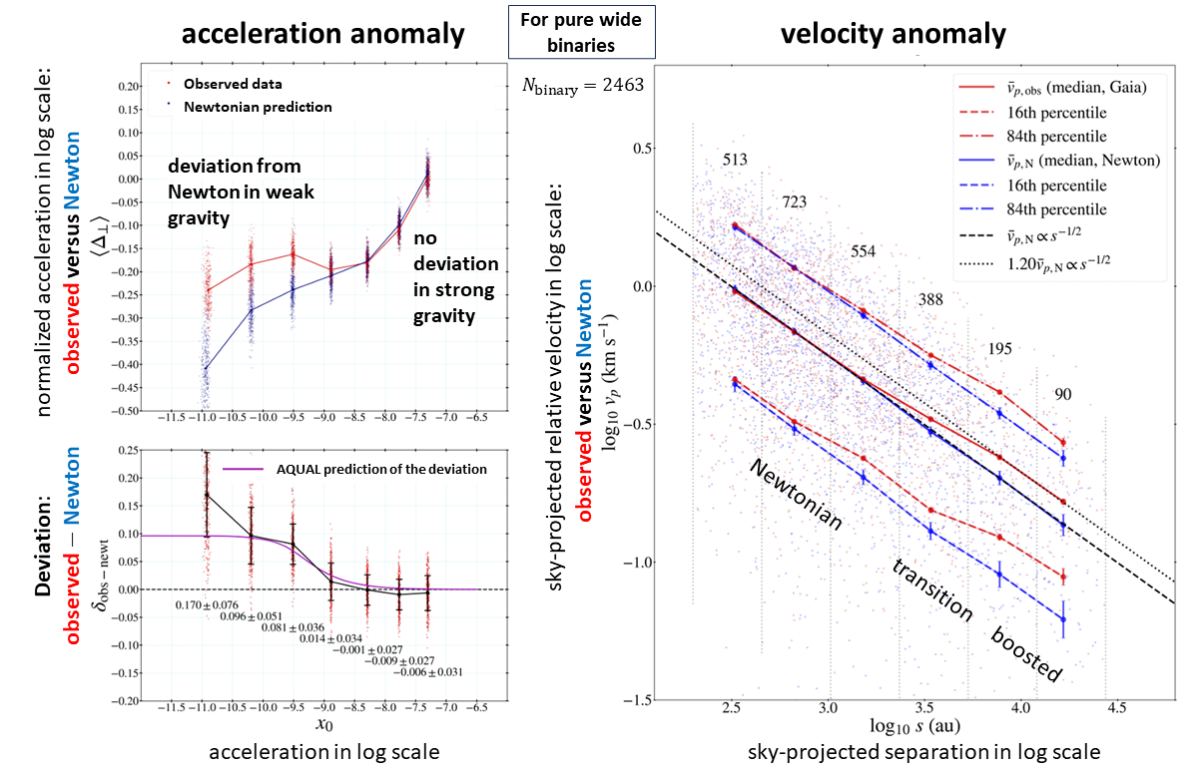
The term dark matter was coined back in 1933 and since then, the hunt for it has been well and truly on. However, the concept of dark matter was to describe anomalies from observation for example the rotation of spiral galaxies and the data from gravitational lensing. An alternative soljution is that our model of gravity is simply wrong, enter MOND, Modified Newtonian Dynamics. A new paper just published explores wide binary stars and looks to see if it supports the MOND model.
Continue reading “The Debate Continues. Do Wide Binaries Prove or Disprove MOND?”If Our Part of the Universe is Less Dense, Would That Explain the Hubble Tension?

In the 1920s, Edwin Hubble and Georges Lemaitre made a startling discovery that forever changed our perception of the Universe. Upon observing galaxies beyond the Milky Way and measuring their spectra, they determined that the Universe was expanding. By the 1990s, with the help of the Hubble Space Telescope, scientists took the deepest images of the Universe to date and made another startling discovery: the rate of expansion is speeding up! This parameter, denoted by Lambda, is integral to the accepted model of cosmology, known as the Lambda Cold Dark Matter (LCDM) model.
Since then, attempts to measure distances have produced a discrepancy known as the “Hubble Tension.” While it was hoped that the James Webb Space Telescope (JWST) would resolve this “crisis in cosmology,” its observations have only deepened the mystery. This has led to several proposed resolutions, including the idea that there was an “Early Dark Energy” shortly after the Big Bang. In a recent paper, an international team of astrophysicists proposed a new solution based on an alternate theory of gravity that states that our galaxy is in the center of an “under-density.”
Continue reading “If Our Part of the Universe is Less Dense, Would That Explain the Hubble Tension?”Could Modified Gravity Be the Answer to Planet 9?
As students advance to higher and higher physics courses, they eventually learn that the simple Newtonian dynamics they learned about in early classes aren’t completely accurate models for understanding the universe. If things get too big or fast, they fall into the realm of relativity, or if they get too small, they get caught up in quantum mechanics. However, simple Newtonian dynamics does the trick for things ranging from how a baseball flies to how planets orbit the Sun.
Continue reading “Could Modified Gravity Be the Answer to Planet 9?”Dark Matter Might Interact in a Totally Unexpected Way With the Universe
According to Sir Isaac Newton’s theory of Universal Gravitation, gravity is an action at a distance, where one object feels the influence of another regardless of distance. This became a central feature of Classical Newtonian Physics that remained the accepted canon for over two hundred years. By the 20th century, Einstein began reconceptualizing gravity with his theory of General Relativity, where gravity alters the curvature of local spacetime. From this, we get the principle of locality, which states that an object is directly influenced by its surroundings, and distant objects cannot communicate instantaneously.
However, the birth of quantum mechanics has caused yet another conceptualization, as physicists discovered that non-local phenomena not only exist but are fundamental to reality as we know it. This includes quantum entanglement, where the properties of one particle can be transferred to another instantaneously and regardless of distance. In a new study by the International School for Advanced Studies (SISSA) in Trieste, Italy, a team of researchers suggests that Dark Matter might interact with gravity in a non-local way.
Continue reading “Dark Matter Might Interact in a Totally Unexpected Way With the Universe”Astronomers Simulated How the Universe Would Look Without Dark Matter
Since the 1960s, there has been a general consensus among astronomers and cosmologists that the majority of the Universe is made up of an invisible, mysterious mass (known as Dark Matter). While scientists still haven’t identified the candidate particle that makes up this mass, indirect tests and simulations have shown that Dark Matter must exist in order for the Universe to be the way it is.
In a fascinating twist, a team of European researchers conducted a simulation that looked at a Universe without Dark Matter. Using an alternative theory known as MOdified Newtonian Dynamics (MOND), the team created a computer simulation in which the galaxies were actually very similar to what we see in the Universe today. These findings could help to resolve one of the most enduring mysteries of modern cosmology.
Continue reading “Astronomers Simulated How the Universe Would Look Without Dark Matter”The Most Massive Galaxies Spin More Than Twice as Fast as the Milky Way
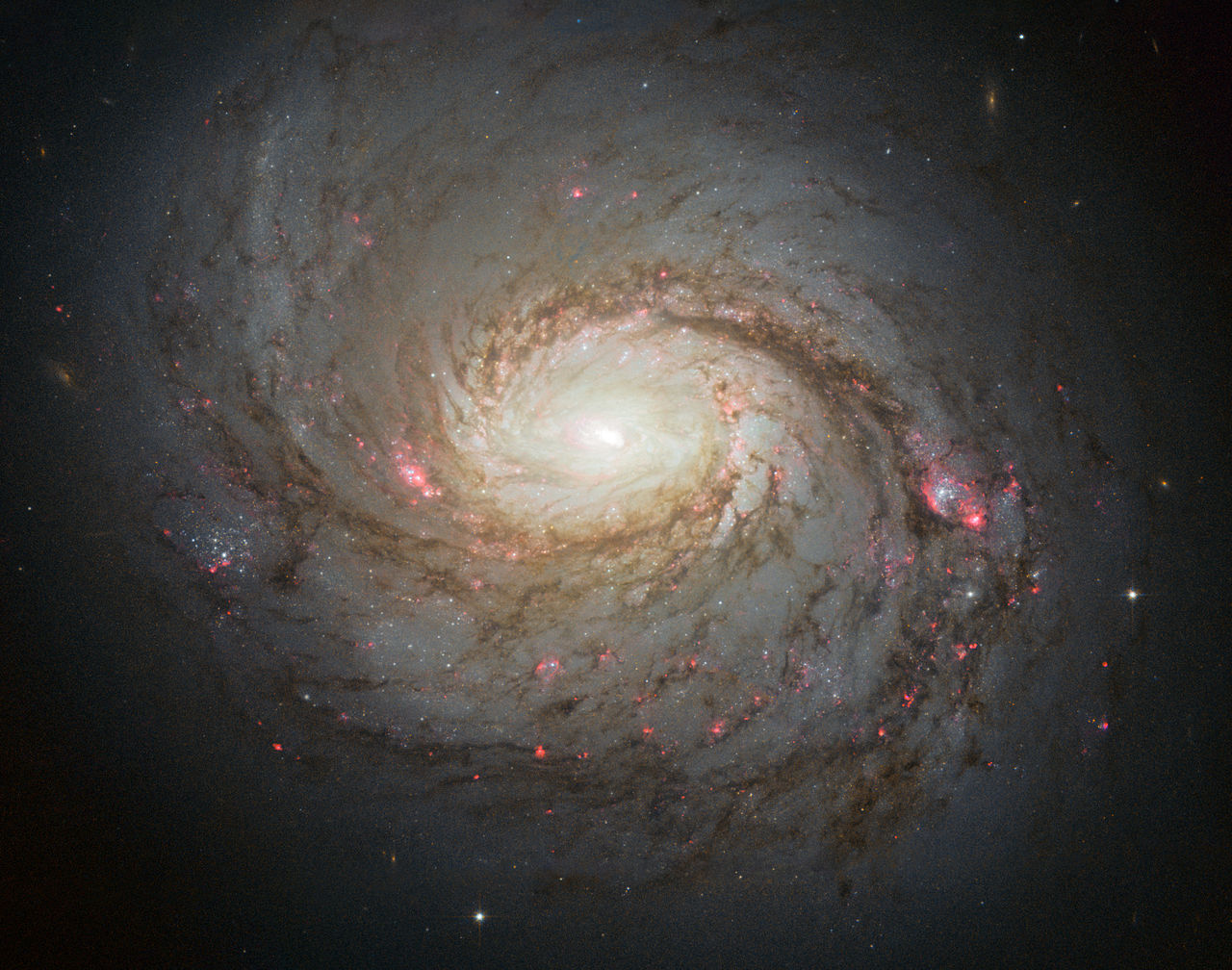
It’s a difficult thing to wrap your head around sometimes. Though it might feel stationary, planet Earth is actually moving at an average velocity of 29.78 km/s (107,200 km/h; 66600 mph). And yet, our planet has nothing on the Sun itself, which travels around the center of our galaxy at a velocity of 220 km/s (792,000 km/h; 492,000 mph).
But as is so often the case with our Universe, things only get more staggering the farther you look. According to a new study by an international team of astronomers, the most massive “super spiral” galaxies in the Universe rotate twice as fast as the Milky Way. The cause, they argue, is the massive clouds (or halos) of Dark Matter that surround these galaxies.
Continue reading “The Most Massive Galaxies Spin More Than Twice as Fast as the Milky Way”Missing Milky Way Dark Matter
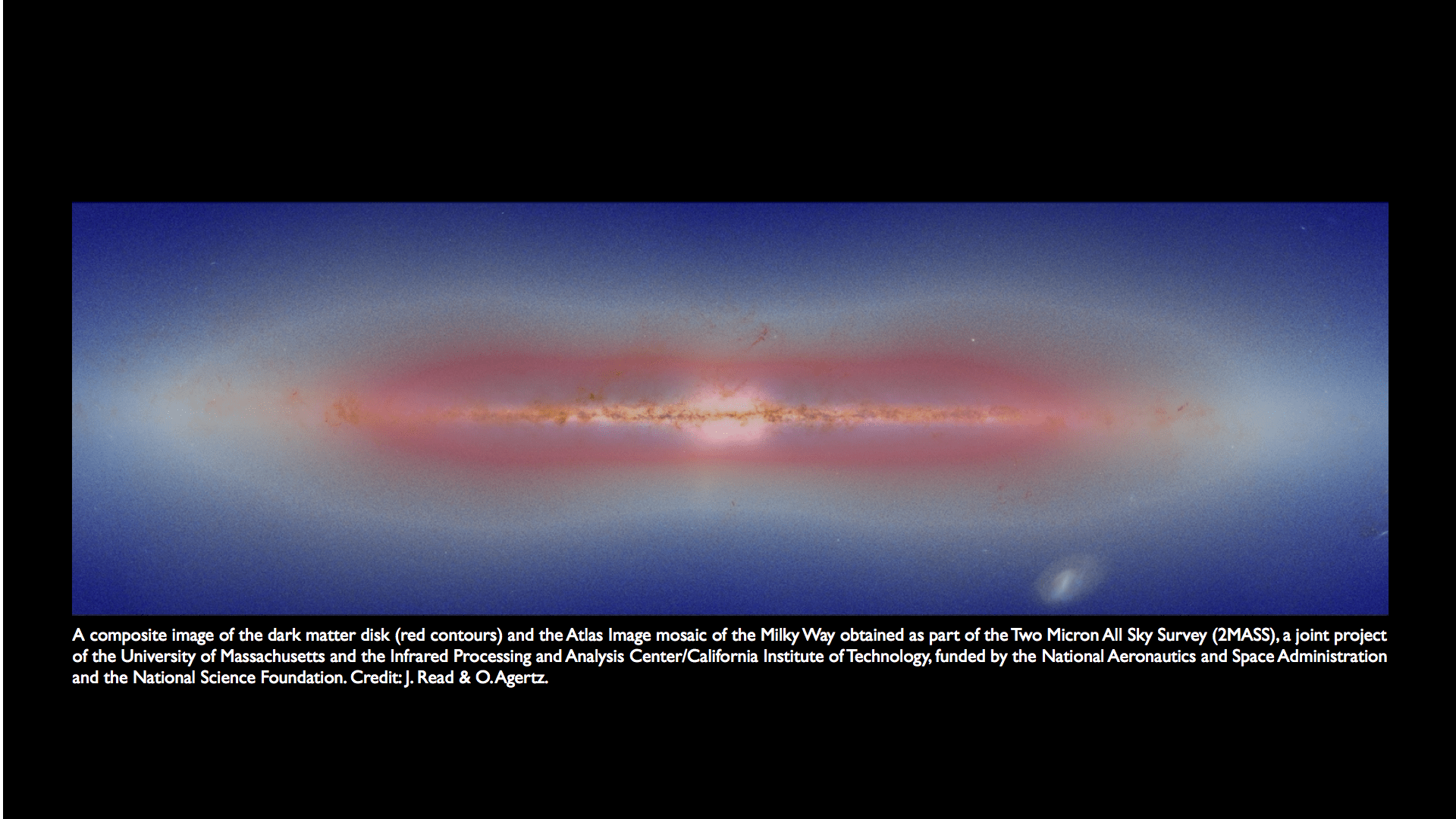
[/caption]
Although dark matter is inherently difficult to observe, an understanding of its properties (even if not its nature) allows astronomers to predict where its effects should be felt. The current understanding is that dark matter helped form the first galaxies by providing gravitational scaffolding in the early universe. These galaxies were small and collapsed to form the larger galaxies we see today. As galaxies grew large enough to shred incoming satellites and their dark matter, much of the dark matter should have been deposited in a flat structure in spiral galaxies which would allow such galaxies to form dark components similar to the disk and halo. However, a new study aimed at detecting the Milky Way’s dark disk have come up empty.
The study concentrated on detecting the dark matter by studying the luminous matter embedded in it in much the same way dark matter was originally discovered. By studying the kinematics of the matter, it would allow astronomers to determine the overall mass present that would dictate the movement. That observed mass could then be compared to the amount of mass predicted of both baryonic matter as well as the dark matter component.
The team, led by C. Moni Bidin used ~300 red giant stars in the Milky Way’s thick disk to map the mass distribution of the region. To eliminate any contamination from the thin disc component, the team limited their selections to stars over 2 kiloparsecs from the galactic midplane and velocities characteristic of such stars to avoid contamination from halo stars. Once stars were selected, the team analyzed the overall velocity of the stars as a function of distance from the galactic center which would give an understanding of the mass interior to their orbits.
Using estimations on the mass from the visible stars and the interstellar medium, the team compared this visible mass to the solution for mass from the observations of the kinematics to search for a discrepancy indicative of dark matter. When the comparison was made, the team discovered that, “[t]he agreement between the visible mass and our dynamical solution is striking, and there is no need to invoke any dark component.”
While this finding doesn’t rule out the presence of dark matter, it does place constraints on it distribution and, if confirmed in other galaxies, may challenge the understanding of how dark matter serves to form galaxies. If dark matter is still present, this study has demonstrated that it is more diffuse than previously recognized or perhaps the disc component is flatter than previously expected and limited to the thin disc. Further observations and modeling will undoubtedly be necessary.
Yet while the research may show a lack of our understanding of dark matter, the team also notes that it is even more devastating for dark matter’s largest rival. While dark matter may yet hide within the error bars in this study, the findings directly contradict the predictions of Modified Newtonian Dynamics (MOND). This hypothesis predicts the apparent gain of mass due to a scaling effect on gravity itself and would have required that the supposed mass at the scales observed be 60% higher than indicated by this study. Continue reading “Missing Milky Way Dark Matter”
Gravity Equation
There is not one, not two, not even three gravity equations, but many!
The one most people know describes Newton’s universal law of gravitation:
F = Gm1m2/r2,
where F is the force due to gravity, between two masses (m1 and m2), which are a distance r apart; G is the gravitational constant.
From this is it straightforward to derive another, common, gravity equation, that which gives the acceleration due to gravity, g, here on the surface of the Earth:
g = GM/r2,
Where M is the mass of the Earth, r the radius of the Earth (or distance between the center of the Earth and you, standing on its surface), and G is the gravitational constant.
With its publication in the early years of the last century, Einstein’s theory of general relativity (GR) became a much more accurate theory of gravity (the theory has been tested extensively, and has passed all tests, with flying colors, to date). In GR, the gravity equation usually refers to Einstein’s field equations (EFE), which are not at all straight-forward to write, let alone explain (so I’m going to write them … but not explain them!):
G?? = 8?G/c4 T??
G (without the subscripts) is the gravitational constant, and c is the speed of light.
Finally, here’s a acceleration of gravity equation you’ve probably never heard of before:
a = ?(GMa0/r),
where a is the acceleration a star feels, due to gravity under MOND (MOdified Newtonian Dynamics), an alternative theory of gravity, M is the mass of a galaxy, r the distance between the star in the outskirts of that galaxy and its center, G the gravitational constant, and a0 a new constant.
Some websites which contain more on gravity equations, for your interest and enjoyment: Newton’s Theory of “Universal Gravitation” (NASA), Einstein’s equation of gravity (University of Wisconsin Madison – heavy), and Gravity Formula (University of Nebraska-Lincoln).
Universe Today, as you would expect, has several stories relevant to gravity equations; here are a few: See the Universe with Gravity Eyes, A Case of MOND Over Dark Matter, and Flyby Anomalies Explained?. Here’s an article about 0 gravity.
Gravity, an Astronomy Cast episode, has more on gravity equations, as do several Astronomy Cast Question Shows, such as September 26th, 2008, and March 31st, 2009.


